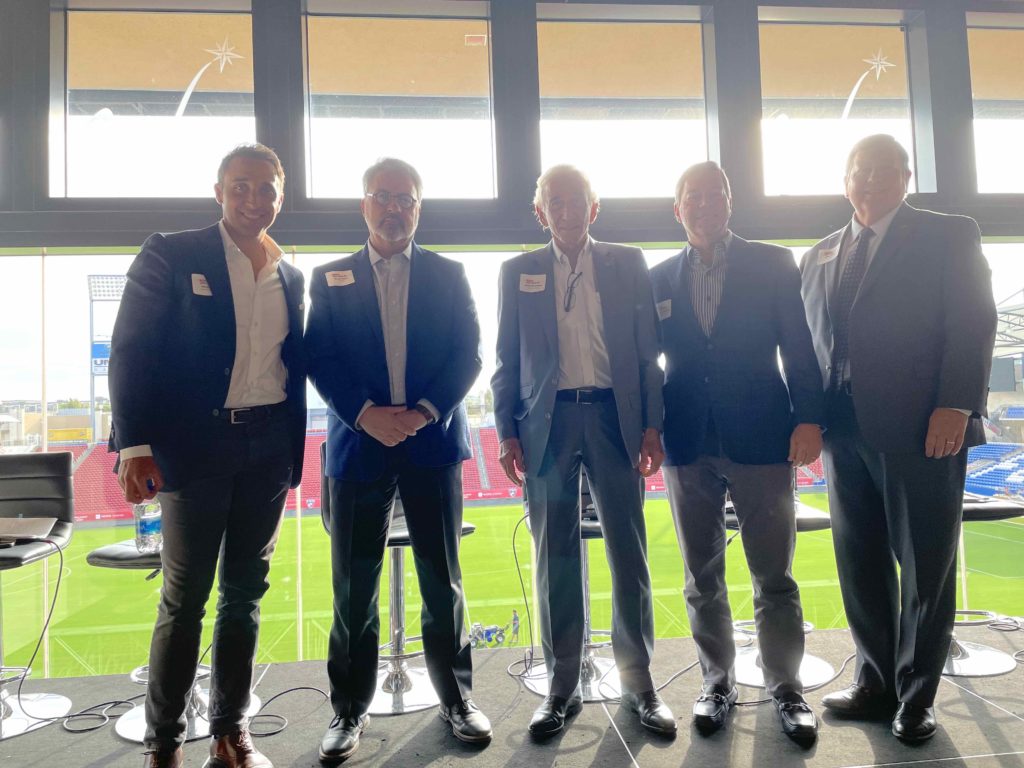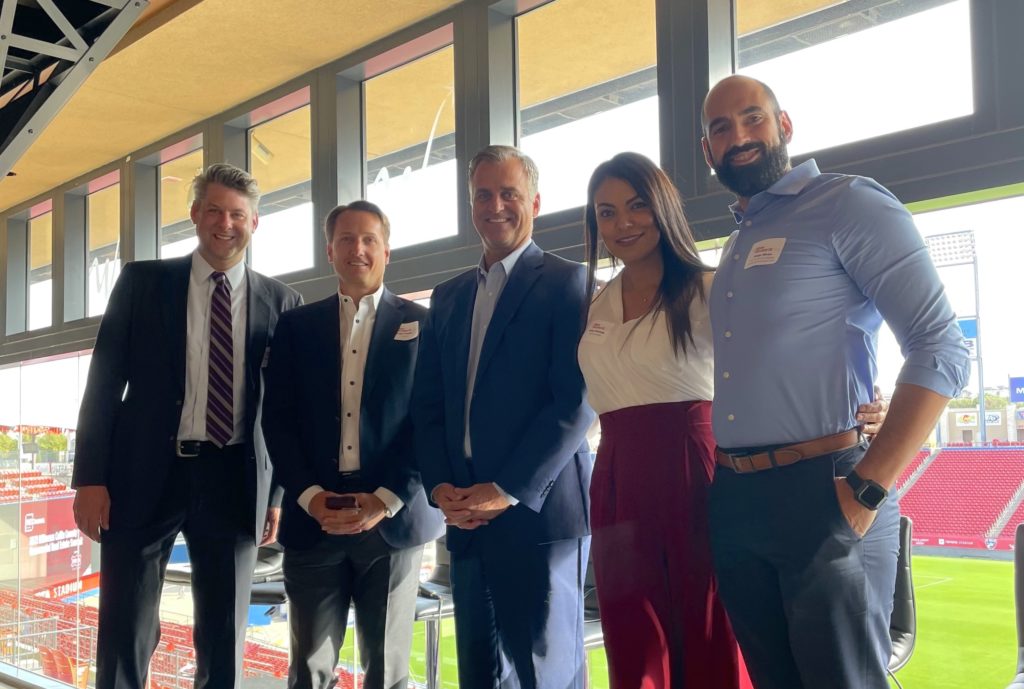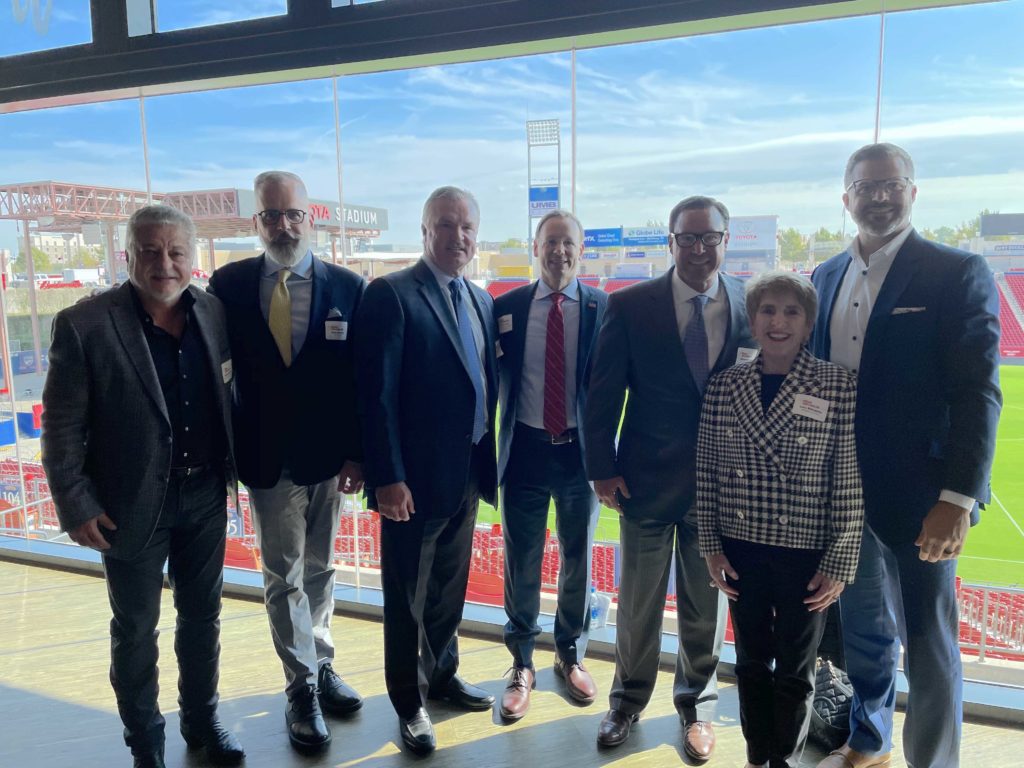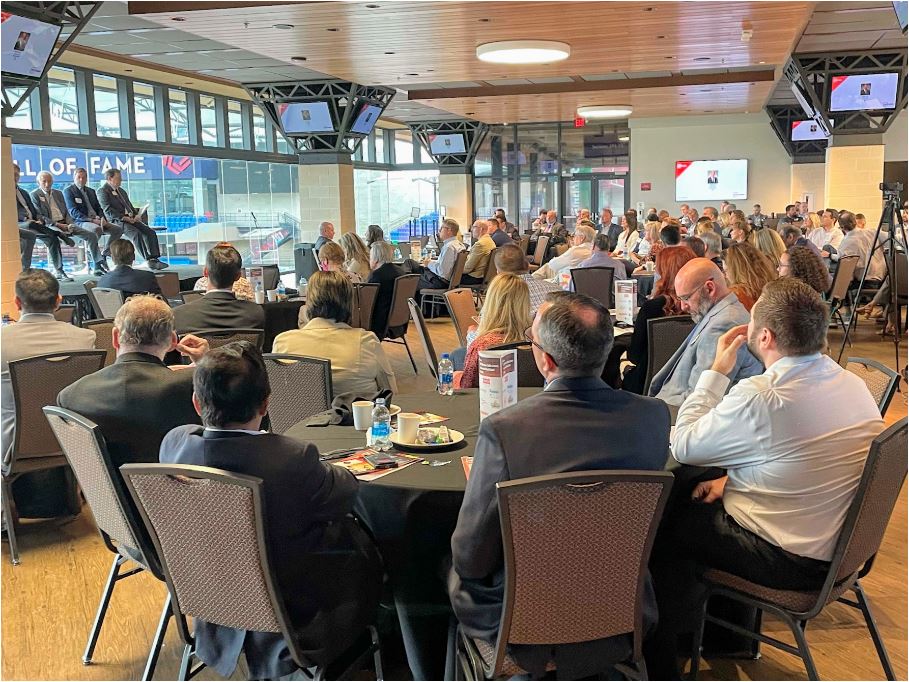On Wednesday, September 29th, some of the biggest names in Texas real estate convened at Toyota Stadium in Frisco to discuss the numerous facets of commercial real estate in Collin County. The summit consisted of four panels highlighting commercial real estate investment trends and insights across the broader region.
Despite the brief economic uncertainty caused by the pandemic, population growth and investment in real estate in Collin County has continued to press forward. Cities such as Frisco, McKinney, Plano, Allen, Celina, Anna, and more, are just some of the places where positive growth and expansion are taking place.
Collin County officials are striving to provide the business and quality of life amenities being sought by the incoming companies while Municipal authorities and economic development councils are working hard to stay ahead of infrastructure needs, and to ensure that projects can get permitted and built within an acceptable time frame.
These topics, and more, were much of the focus of the summit. The event kicked off with a brief intro from keynote speaker from David Craig, Chairman & CEO, Craig International, and then jumped right into identifying and wrangling some of the region’s biggest challenges and opportunities.
Big things are on the way
National interest in Texas not only means new investment but there’s much more competition to get the next deal. Fortunately, there is still plenty of room (and opportunity) in Collin County for everyone from employers, residents, and institutional investors.
These themes were discussed during the first panel, which featured Allen Gump, Executive Vice President with Colliers; Herb Weitzman, Executive Chairman of Weitzman; Steve Zimmerman, Managing Director of Brokerage for The Retail Connection; and Barry Hand, Principal and Studio Director of Gensler’s Dallas office. The moderator for the panel was Doug Jones, Managing Principal at Cushman & Wakefield.

Some quick stats help illustrate the story: with 43 million square feet of industrial space over 716 separate properties, Collin County represents roughly 5% of the total industrial product in the Dallas-Fort Worth Metroplex. There is currently another 35 million square feet of industrial under construction, making Collin County poised for the boom in leasing demand the region is currently experiencing.
Additionally, there are 107 users in Collin County with 100,000 square feet, or greater, of industrial space. There is a notable presence of big names in Collin County, which include the likes of Amazon, UPS, Southwest Airlines, Motorola, and of course, the Dallas Cowboys. New York and California-based hedge funds are some of the biggest investors in Collin County: since 2016, $1.7 billion has been invested with $237 million under construction just for this year.
Pressure remains to build more multifamily across the region
Multifamily properties remain desirable for investors across the region, but there are some headwinds facing the asset class.
This theme, and more, was discussed during the event’s second panel, which featured Todd Franks, Executive Managing Director & Founding Principal at Greystone; Paris Rutherford, Principal at Catalyst Urban Development; Jorge Abreu, CEO of Elevate Commercial Investment Group; and Nadia Christian, Partner at Wolverine Interests.
The panel discussion was moderated by Paul Hendershot, Senior Director of Market Analytics for Texas, Oklahoma and Arkansas with CoStar Group.

Collin County is leading the Metroplex in job growth, which means that there will need to be additional housing in the area. Rising single-family home prices have helped with multifamily absorption, with sellers seeing 3-5% cap rates, the group highlighted. In some cases, rents can be higher than mortgages due to economic pressures and demand.
While there are currently 26,700 new units under construction across the Metroplex, some developers are facing headwinds. For instance, municipalities with strict zoning guidelines — where detached single-family homes are favored — cause a longer lead time with entitlements. Developers have to present plans to residents of a community and in many cases, “follow the vision for the city.”
Other trends that are challenging new multifamily development across the Metroplex are generational changes and cost of living. As some groups resist change and new development, it can put more pressure on the market, elevating the need for more affordable housing. However, Collin County has a remarkable opportunity to build a working community and set a new precedent. The challenge becomes getting it right. Collin County has already established a reputation apart from the Dallas-Fort Worth area as its own “brand.”
The time to scale up infrastructure and master planning is now
During the third panel, the group discussed themes related to the area’s infrastructure, major developments, recreation amenities, and planning for the future.
Panelists included Peter J. Braster, Director of Special Projects for the City of Plano; Jason Ford, CEcD, President of the Frisco Economic Development Corporation; Joe Hickman, General Manager at Blue Star Land, LP; Mehrdad Moayedi, President and CEO of Centurion American Development Group; Clay Roby, Managing Director at Stillwater Capital; Lucy Billingsley, Partner with the Billingsley Company; and Michael Swaldi, Senior Managing Director at JLL Capital Markets.
This panel was moderated by Jeff Johnson, CEO of REjournals.
Collin County is “spiraling up,” but this means that major infrastructure projects, such as the expansion of the North Dallas Tollway, are crucial for the region. Cities need to be aggressive and forward-looking when it comes to infrastructure development or there could be bottlenecks — or worse, a stalling-out — of growth. While there’s a traditional trope that the private sector moves faster than the public sector, there’s an opportunity for Collin County to buck that trend.

“Frisco is located within both Denton and Collin Counties,” said Jason Ford, president, Frisco Economic Development Corporation. “And, the PGA’s new headquarters and resort is strategically located in the Denton County side of Frisco. We anticipate that the PGA will have a tremendous regional economic impact that spurs regional growth and development across both Denton County, Collin County and areas far beyond for years to come.”
The emergence from the pandemic is the perfect opportunity to come up with new and fresh ideas for Collin County communities in terms of amenities and overall quality of life. Building new parks, hiking and biking trails, and other recreational amenities are just one piece of the equation. Looking at planning from a more holistic perspective, where creating a complete community that meets everyone’s needs, will lead to success.
The quickly increasing cost of living is having an impact on lower-earning families across Collin County, but there are opportunities to not only build new but to repurpose existing structures in order to add more housing and office space more quickly. While some companies are still waiting on the sidelines to see how things shake out with the pandemic, they may be missing their moment. The time to jump in and participate in planning and development is right now.
Exponential growth is real, and it’s here
The fourth and final panel featured Daniel Bowman, Executive Director/CEO of the Allen Economic Development Corporation; Rex Glendenning, broker and owner of Rex Real Estate; Joey Grisham, Economic Development Director for the Anna Economic Development Corp.; Alexis Jackson, Director of Celina EDC; Peter Tokar III, President & CEO of McKinney Economic Development Corporation; and Carl Pankratz, President and Managing Director at Blackacre Commercial.
The final panel was also moderated by REjournals’ own Jeff Johnson.
Collin County has a great problem: the area has had 100% growth in ten years. But the flood of new residents and the evolving circumstances impacting the workplace are raising the bar in city planning. There is one major theme and question which should lead master planning and community development, which is, how does Collin County become the next next-gen county?
For example, incoming residents of McKinney in desirable corporate workforces are joining long-time residents in the county’s small rural communities. These existing residents may suddenly find themselves in an urban environment as the area quickly develops. So how do you balance the mix and meet the needs of both old and new residents?
This is where the role of economic development councils comes in. Economic development councils make investments and deals not to compete with private developers but to steer development in a balanced way. Convention centers, hotels, entertainment venues, community colleges, medical projects, and manufacturers are also being wooed. Meanwhile, developers are being encouraged to put in roads at their expense against future impact fee credit, in order to help the cities where they are doing projects.




